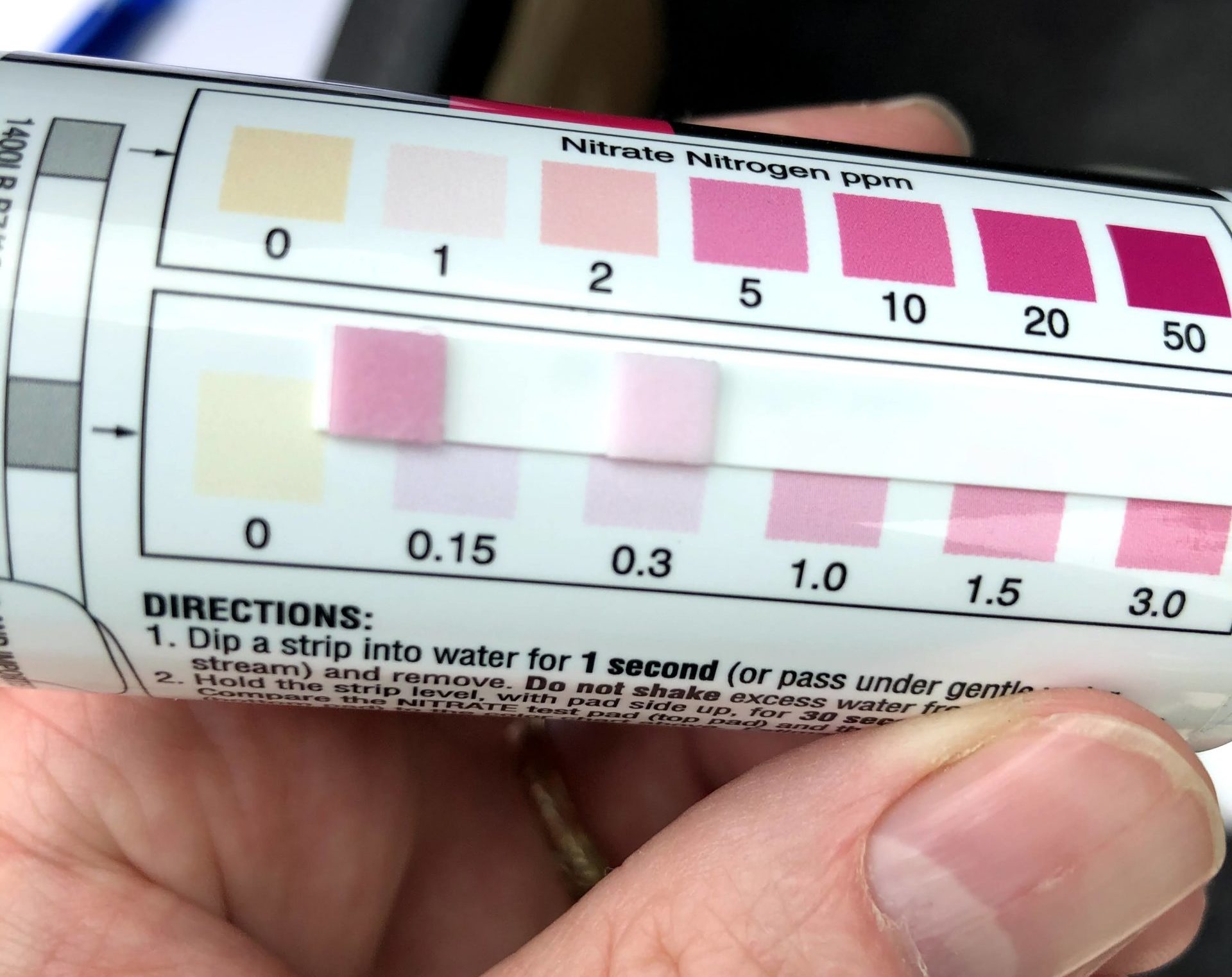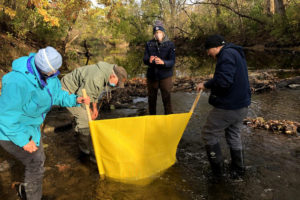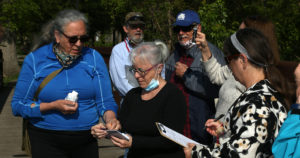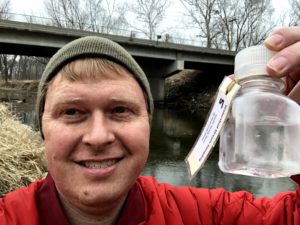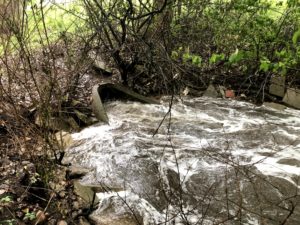Water Quality Monitoring in Story County
Understanding water quality in Story County lakes and rivers is a big job with many components and involving many partners:
Wrapping up our third season
A complete report on findings the 2022 season will be available in March. Here are some metrics showing the growth in the volunteer program. The 2021 annual report and a summary of finding are available here.
Story County Water Monitoring & Interpretation Plan, 2021-2030
Prairie Rivers partnered with Story County and 8 other organizations to develop a ten-year Water Quality Monitoring & Interpretation Plan for Story County. Regular communication between the various groups testing water helps avoid duplication and leads to new opportunities to improve water quality. Planning for how data can be used over the long-term ensures that we get the most value from our time and effort. Read the plan here.
Partners
- Prairie Rivers of Iowa
- Story County Conservation
- City of Ames
- City of Nevada
- City of Gilbert
- City of Huxley
- Story County Soil & Water Conservation District
- ISU Leopold Center for Sustainable Agriculture
- Izaak Walton League of America
- Story County Community Foundation
How’s the water? Click here to see real-time data from water quality sensors and gages, as well as our latest summaries. Sensors are maintained by USGS, University of Iowa’s IIHR, the USGS, and the USDA. Sensors may be offline during the winter.
Story County Conservation has assembled water testing kits that it is making available for volunteers to do regular monitoring of streams around the county. Find out about the monitoring program and sign up here.
The Izaak Walton League’s Save Our Streams program is supporting volunteer monitoring in Iowa through training events, a database, and fun entry points like the Stream Selfie and Winter Salt Watch.
Prairie Rivers has been continuing the long tradition of organizing volunteer “watershed snapshot” events in May and October. We also make supplies available to local science teachers.
- Spring 2020, 28 volunteers
- Fall 2020, 13 volunteers
- Spring 2021, 15 volunteers
- Fall 2021, 15 volunteers
- Spring 2022, 14 volunteers (plus 8 in other watersheds)
- Fall 2022, cancelled due to drought, but we rescued mussels instead.
Lab Testing
Staff from Prairie Rivers, the City of Ames, and volunteers collect monthly water samples from 15 sites around the county which the City of Ames Water and Pollution Control Laboratory tests for nutrients, sediment, and bacteria. Results are posted here and updated within two weeks of sampling.
Archived results from 2020 and 2021. Almost every stream we tested exceeded the E. coli standard! For a detailed explanation of what that means, here’s E. coli in Context.
We’re partnering with Dr. Jacob Petrich from the ISU Chemistry Department to narrow down sources of fecal bacteria contamination by using light to test for flourescent whitening compounds found in laundry detergents. So far, we’ve been able to detect the compounds at low levels, but we’re also picking up some confounding signals from other things that fluoresce in the same range. There are some additional tests that Dr. Petrich thinks can distinguish them.
We’re using storm samplers to get a better understanding of polluted runoff. Water quality can change dramatically after heavy rain.
Analyzing the Data
Is water quality improving? That’s a harder question to answer than you might think. Our Watershed Educator, Dan Haug, has been learning the programming language R and statistics and trying to translate the findings for the rest of us: i.e. “If you sample on Mondays, you might get a different result than if you sample on Fridays.”
We presented a poster on this concept (Minimum Detectable Change) at the 2021 Iowa Water Conference.
It’s also a common topic on our blog:
By understanding the margins of error associated with water quality averages, we ensure there’s not a mismatch between the size of changes we can detect and the size of changes we would expect from conservation projects. We can improve our ability to detect trends by changing the monitoring setup or analysis. Place-to-place rather than year-to-year comparisons are less susceptible to this kind of error, though not fool-proof.
Our goal is to make sure our conclusions are robust and relevant to our stakeholders.
Questions about the plan, the data or how you can get involved?
Contact Dan Haug at Prairie Rivers of Iowa

